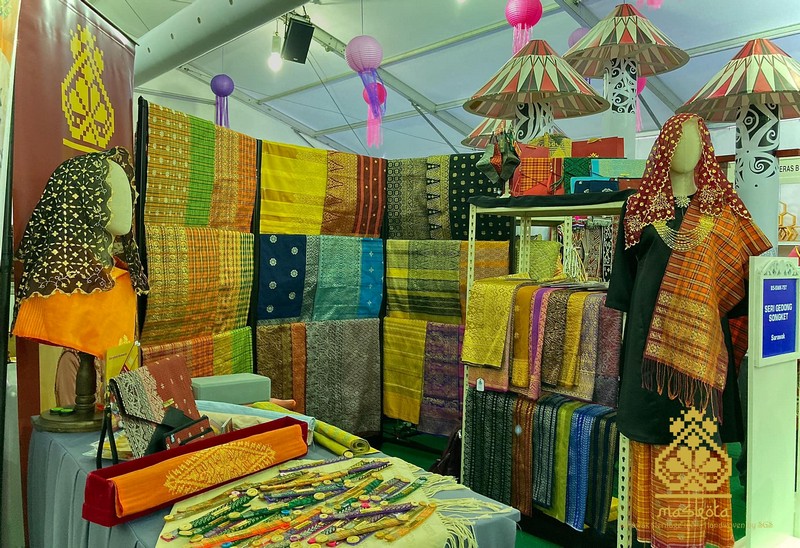– Sarawak Songket
There was a time when the Malay nobility of Sarawak could be seen donning the songket during important events or celebrations. Women would pair the handwoven textile with keringkam, while men would wear it as their sampin.
Today, it is a fabric representative of the Malay culture and heritage. Its motifs – of floral, rosettes, stars and geometric stripes influenced by their religion – are even accepted as the latest trend in the local fashion scene.
At a glance, the Sarawak songket nearly resembles those made in other parts of Malaysia, given that they are woven in silk or cotton threads with metallic threads of gold and silver using the supplementary weft technique.
However, the songket in this State employs the ‘tapok’ technique, where weavers hide the threads behind the patterns during the weaving process, leaving no extra thread hanging behind the brocade.
This in turn makes the outer and inner seams of the textile indistinguishable, making it a stand out not only for its elegance, but also for its wearability on both sides.
As ubiquitous as the Sarawak songket is and as lucrative as weavers can earn when their works are sold – ranging from hundreds to thousands of ringgit per fabric – producing a piece takes a long time.
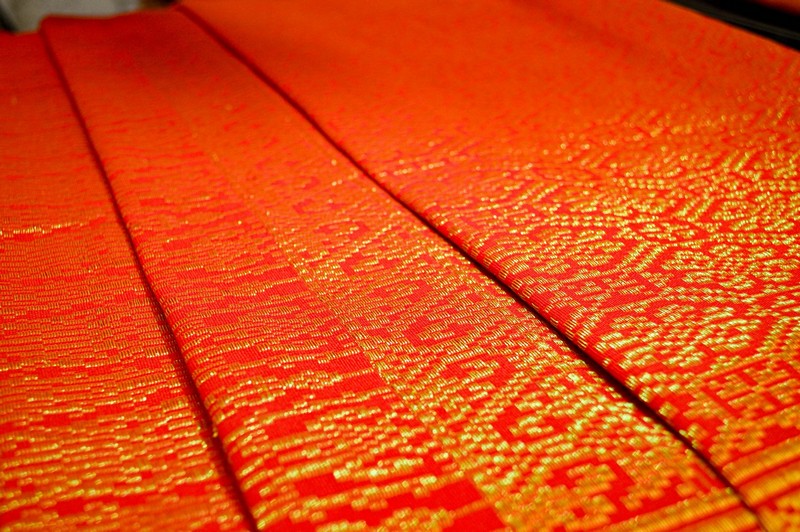
Depending on the complexity of the motifs and the materials used, it can take months to complete. In some cases, materials such as the metallic threads can be difficult to source and frankly not everyone can afford a piece of songket.
These factors were perhaps the cause of the textile’s near extinction in the 1960s, when weavers from Kampung Rajang, Belawai stopped weaving the songket for a living. It wasn’t until 1989 when a team from Sarawak Economic Development Corporation (SEDC) approached the community of the village in hopes of persuading them to restart their songket business.
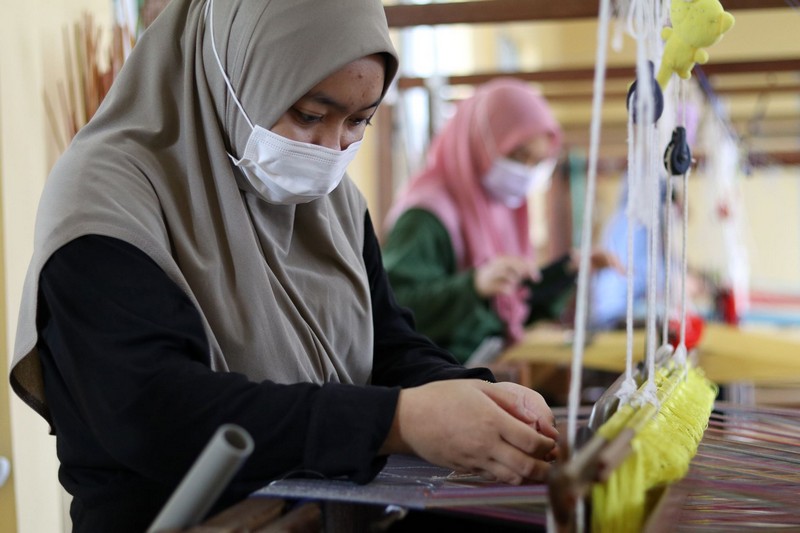
This led to the establishment of Kumpulan Tenun Songket Rajang in 1991, consisting of 19 weavers who were trained in songket weaving and guided in marketing strategies by SEDC.
With further support from the Malaysian Handicraft Development Corporation and the Sarawak Government, the group now runs Pusat Tenunan Songket Sarawak, led by master craftsperson Pn Sa’anah Suhaili.
Commercialising a Sarawak Heritage
The revival of the songket industry at Kampung Rajang is just one of several initiatives the Sarawak Government has been undertaking to preserve the art of Sarawak songket weaving.
A crucial player in this endeavour is the Centre of Technical Excellence Sarawak (CENTEXS), which is tasked with identifying talents and encouraging more people to learn the traditional craft.
The technical and vocational education and training institution is fulfilling these goals through the Songket Weaving and Keringkam Embroidery Technical Training Programme. Comprising six months of training and two months of participation in incubator projects, the full-time course is open to all eligible Sarawakians.
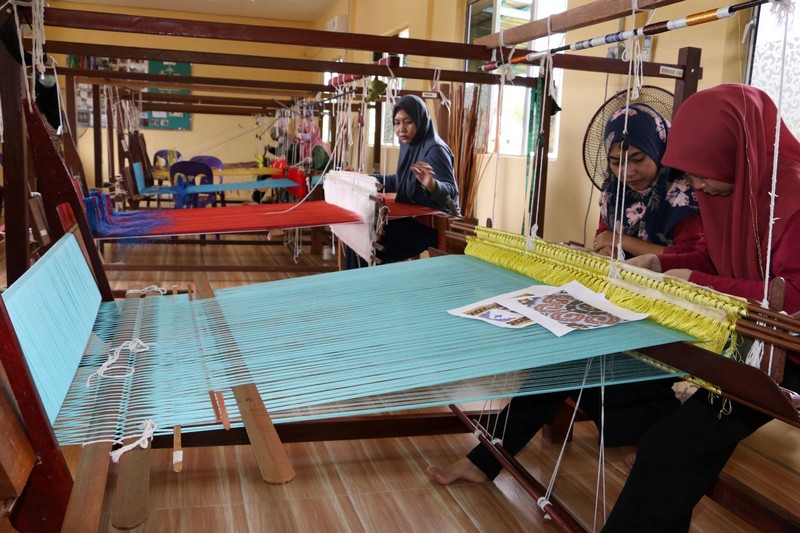
Those who are undecided on whether to commit to the programme can first participate in CENTEXS’s short-term Community Technical Outreach Programme (CTOP), a free course that lasts up to five days.
Fundamentally, these programmes are designed to increase the number of weavers in Sarawak as it strives to commercialise its songket.
As of July 2022, the State has 30 CENTEXS-certified songket weavers as well as 45 CTOP participants.
Additionally, there are 38 weavers under the Old Kuching Smart Heritage project and another 38 under the Songket Sarawak Prison Department (SaraPride) Industrial Vocational Centre at Puncak Borneo Prison.
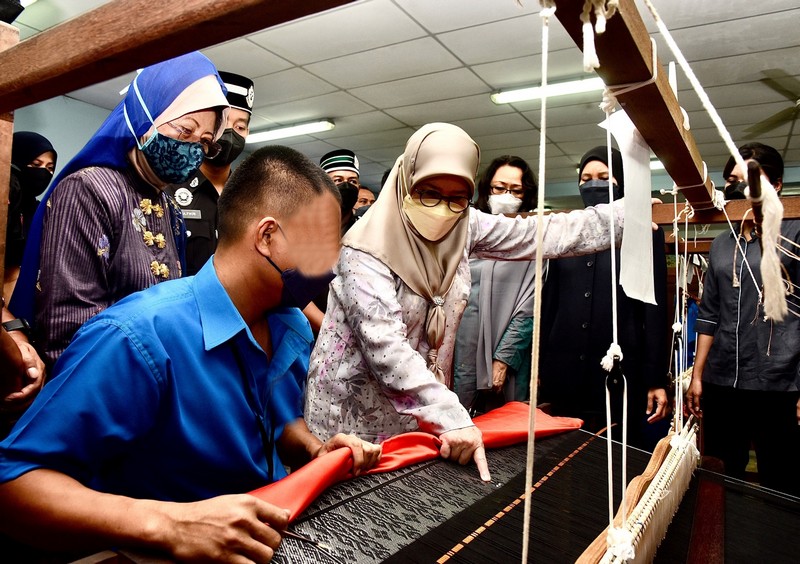
“If we were to commercialise Sarawak songket and tap into the global market, we are expecting huge demand so how are we going to fulfil it if we don’t have enough weavers?” says CENTEXS Commercial Sarawak (CCS) general manager En Mohamad Shahren bin Mohamad Yusri, as quoted by New Sarawak Tribune.
A subsidiary of CENTEXS, CCS was established in 2019 to enhance the commercial value of Sarawak’s heritage products, and provide opportunities to local entrepreneurs and youths through marketing and technical skills services.
Apart for the urgency to nurture more traditional craft talents, the company is focusing on diversifying products based on the Sarawak songket. Designers from CENTEXS, for instance, have transformed the textile into bags, shoes, home decor items and many more.
“Although we want to preserve Sarawak songket by ensuring it is done or woven in the traditional way, we need to be innovative in making it into an everyday fashion kind of thing,” adds En Mohamad Shahren.
All songket products sold through CENTEXS Commercial are repackaged and marketed under a brand called Saratage.
Produced by CENTEXS as well as local artisan communities from Kuching, Samarahan, Gedong, Mukah, Limbang and Lawas, they can be found at various platforms, including the Saratage online store and the Songket and Keringkam Gallery in Kuching.
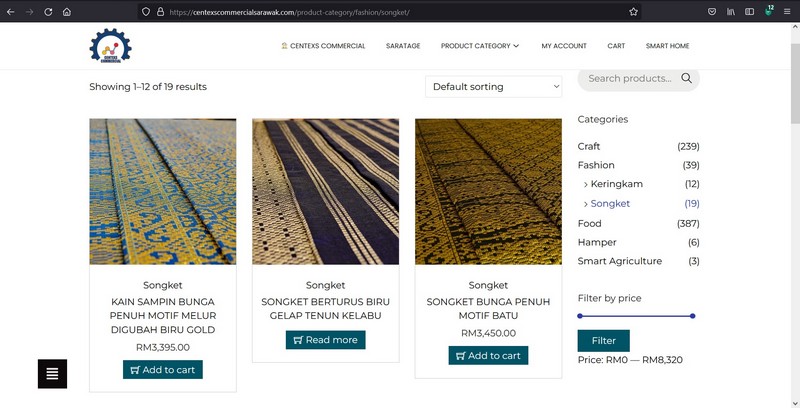
The Future of Sarawak Songket
Songket in Malaysia, including the Sarawak songket, was listed under the Representative List of the Intangible Cultural Heritage of Humanity by the United Nations Educational, Scientific and Cultural Organisation (UNESCO) in December 2021.
The list is the highest recognition in the world for intangible cultural heritage (ICH); thus giving Sarawak a greater drive in promoting and highlighting its songket globally, and most importantly safeguarding its culture and heritage.
At the inaugural ICH Humanity and Community Awards in Kuching in June 2022, the Premier of Sarawak YAB Datuk Patinggi Tan Sri (Dr) Abang Haji Abdul Rahman Zohari bin Tun Datuk Abang Haji Openg proposed for the setting up of songket centres in every district of the State.
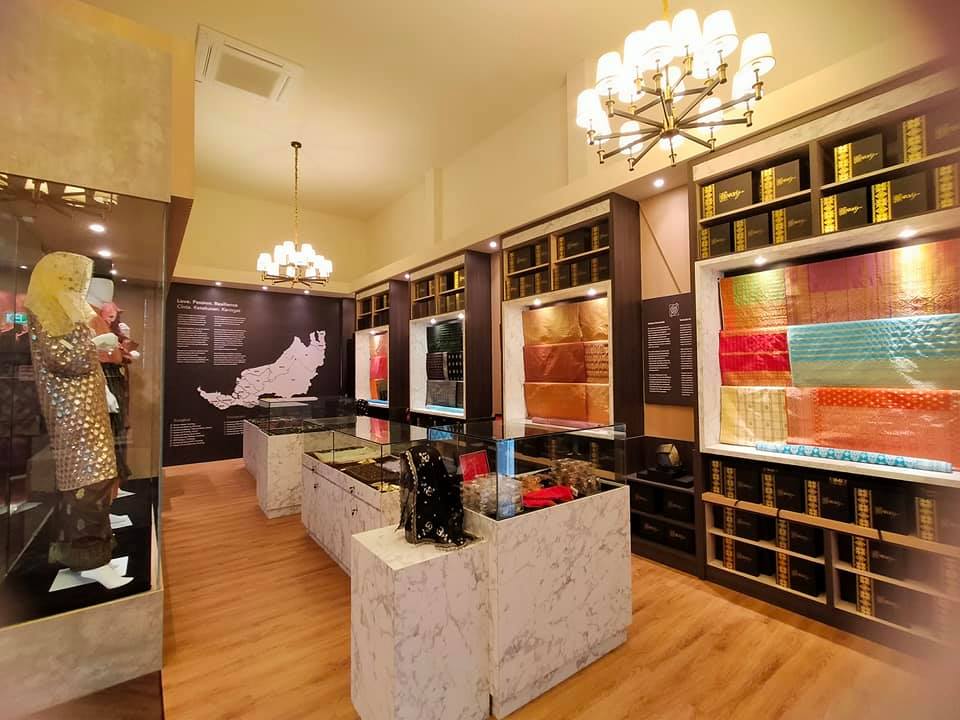
These centres, he explained, could offer spaces for songket weaving production, education and training as a means to grow Sarawak’s songket industry and boost the local economy.
“By adding value and expanding the value chain of our songket, we are giving the opportunity for practitioners to be part of that process to be a high-income society by 2030.
“If we can do this, I believe our humble songket will not be a ‘kampung item’ any more but a global item that can fetch very high price. We can draw example from the Korean kimchi that originated from the villages but now is a global item sought by many.
“These are our hope and I am confident that one day we will arrive there if we are focused on developing the songket as a global product,” he said.
